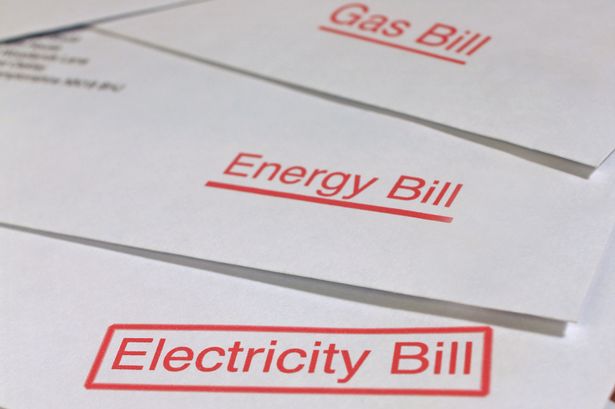3,800% increase in energy switching queries: Experts reveal advice on changing energy suppliers

With recent news that over a million homes have been supplied gas and electricity by companies that have gone bust, it is no surprise that Google search volumes for ‘switch energy provider’ have increased by 3,800% over the past 30 days.
To help clear the confusion, SaveOnEnergy.com/uk wanted to lend their expertise to people who have questions with regards to energy suppliers, from tips on how to choose your energy suppliers and how to reduce the cost of your bills, to how to get a refund from your supplier.
Tips on how to choose energy suppliers
Consider where you live
One of the main factors that determines the cost of your electricity and gas is your postcode. Remote, rural parts of the country typically involve higher costs, while southeast England enjoys the best-value gas and electricity.
The three main factors that influence how much energy will cost in each area:
The amount of energy that a supplier sells per region.
The amount of energy that a supplier buys from generators per region.
The amount of charges incurred in supplying your postcode with energy, as per the local distribution networks.
Use an energy comparison website
The best way to find a cheap energy supplier is by searching for current plans using a trusted energy comparison website. You can compare gas and electricity prices separately or view dual fuel prices, just input your postcode, address details, and figures from your latest energy bill. As you can check quotes from numerous different energy suppliers on comparison websites your eyes might be drawn to a lesser-known supplier which in return could save you a significant amount of money.
Ofgem ran a survey which tracks consumer perceptions of the energy market, found that when asked about switching two thirds (66%) of households said they had switched using a price comparison website. Global monthly search volumes for ‘energy comparison’ currently stands at 84,100 searches, highlighting the continued importance and interest in the subject.
Compare the big six suppliers
When you’ve entered your details, you can compare prices from the country’s big six energy suppliers: Centrica plc (British Gas, Scottish Gas and Nwy Prydain), OVO (including Scottish and Southern Energy – SSE), npower, E.ON, EDF, and ScottishPower. Although there has been a lot of change in the energy market over the last decade, with more options available to the public than ever before, the ‘Big 6’ still hold 70% of the market share between them.
These suppliers won’t necessarily have the cheapest offers, but they tend to feature the widest range of tariffs to choose from. As they’re well established, they also run little risk of going bankrupt, unlike smaller suppliers. Be sure to look beyond the headline figures of each tariff: what payment methods do they accept? Are there expensive exit fees? How long is the contract?
Consider smaller energy suppliers
Small energy suppliers can often provide more competitive rates than the big six because they need to attract new customers. Smaller companies are starting to dominate comparison tables with cheap prices and a host of other features.
Many of these smaller companies, like Bulb or OVO Energy, have been in the market long enough to consider themselves established, and this segment is a rapidly growing proportion of the industry.
Compare fixed and variable rates
In addition to the size and reputation of the supplier, another factor to consider during your search is the type of contract. When you run your comparison, you’ll see both fixed and variable plans listed.
Fixed-rate contracts tend to last between 12-24 months, guaranteeing to charge a fixed rate for each unit (kWh) of energy you consume during the length of the tariff. Bills will still vary according to your monthly usage, but there won’t be any unexpected rate rises to worry about.
Variable price tariffs will go up or down depending on the price of wholesale energy. This is important to bear in mind: today’s variable tariff might offer the cheapest electricity deal, but if wholesale prices rise next month, that may no longer be the case. Generally, standard variable rate tariffs should be avoided. These are the default contracts that providers automatically move customers to at the end of a fixed deal and are usually much higher in price.
Look at different types of metered plans
Even if you don’t currently have an energy meter at home, they are easy to install and can impact your cheap energy options.
Economy 7 – You’ll see two sets of numbers on the meter. Economy 7 tariffs employ a dual-pricing plan. You’ll pay ‘normal’ energy prices during the day, but qualify for cheaper rates overnight.
Smart meter – Suppliers may offer cheaper rates for customers with smart meters. These tend to produce cheaper bills, as readings are sent automatically to your supplier at regular intervals to avoid inaccurate estimated bills.
Prepayment meter – These pay-as-you-go plans require you to ‘top up’ your account with credit before consuming energy. Although they allow you to track the cost of your energy and avoid falling into arrears, prices tend to be less competitive.
How to switch to a new cheap energy supplier
After you’ve followed these steps and weighed your options carefully, you can simply select the cheapest gas and electric plan from the price comparison website. The process of switching is free of charge. Fill out the requested information online and your new energy supplier will do the heavy lifting of contacting your old supplier to arrange the changeover.
There are currently on average 12,700 monthly Google searches in relation to ‘cheap energy supplier’, which shows we are always on the look for a less expensive deal.
How do I know a supplier is right for me?
Finding the perfect energy supplier for you is no small feat. With the range of options available and factors to keep in mind, make sure to consider whether a potential energy provider suits your lifestyle as well as your budget. The best energy plan won’t necessarily be the cheapest.
In addition to looking at prices, you should also consider factors like customer service, supplier reputation, and freedom within the plan. An increasing number of consumers are looking for green energy plans, which tend to cost a bit more, although prices are becoming increasingly competitive as renewable energy sources grow.




